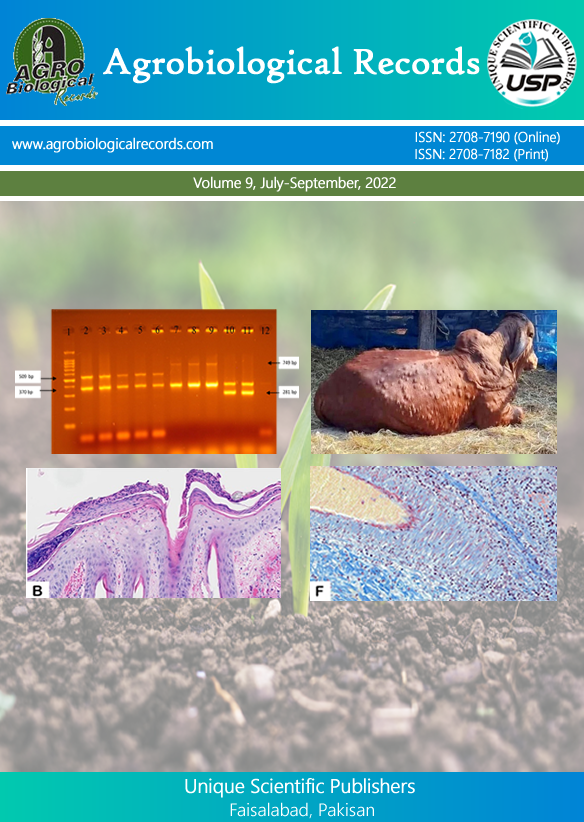
M Arfan Zaman1, Uzma Mehreen1, Warda Qamar1, M Fiaz Qamar1, Muhammad Kashif1, Zohaib Shahid1 and Rao Zahid Abbas2
1Department of Pathobiology, College of Veterinary and Animal Sciences, Jhang, Sub-campus University of Veterinary and Animal Sciences, Lahore-Pakistan; 2Department of Parasitology, Faculty of Veterinary Sciences, University of Agriculture, Faisalabad, Pakistan
*Corresponding author: arfan.zaman@uvas.edu.pk
Theileriosis is an intracellular parasitic disease in tropical and subtropical countries and acts as a potential killer causing major constraint on animal's productions leading to high morbidities and even mortalities. This review presents the actual status of Bovine Theileriosis (BTH) and their associated risk factors in Pakistan, China, India, Iran, and Bangladesh. Within this review also ascertains the correlation of BTH with tick abundance, seasonality, and cattle susceptibility. To identify the related papers from different internet databases including Google Scholar, Science Hub, PubMed, Science Direct and Scientific Information database were appraised for articles published during last decade. The research data collected from 5 Asian countries indicate highly variable prevalence of BTH ranging from 2.69-39%. Based on critical analysis of current data (2000-2019) of 5 Asian countries, the highest prevalence rate of BTH was recorded in China (39%) followed in order by Iran (33%), India (31.7%), Pakistan (21.2%) and Bangladesh (2.69%). The difference can be attributed to the ecological and graphical factors and may be different in housing systems. Main vector involves in the transmission of Theileriosis was Hyalomma (80%). June through September was the most favorable months for Theileriosis in all the Asian countries' understudies. Exotic cattle were observed more prone to BTH than local breeds. As far as diagnostic techniques were concerned, understudies data showed that in Asian countries the most adopted method for the diagnosis BTH was the conventional method (41%) after this, polymerase chain reaction (PCR) (21%) and serological mixed techniques (23%) were used. Our results suggested updates and highlight the imperative information on the true burden of BTH in some Asian countries.